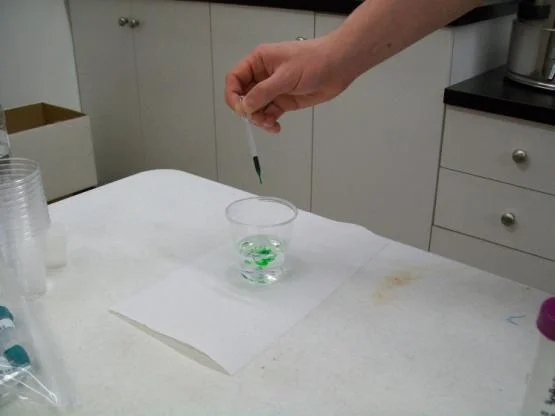Curriculum connections for grades four to twelve all across Canada.
Alberta Grade Nine Science
Unit C: Environmental Chemistry (Social and Environmental Emphasis)
2: Identify processes for measuring the quantity of different substances in the environment and for monitoring air and water quality
Is Our Water Safe? What Should We Do If Our Water Is Not Safe? Problem-Based Learning Lesson
1. Put the students into groups of 3-5. 2. Provide the students with the "Not In My Backyard?" handout. 3. Have the students define the problem and determine what they know about the problem, what they need to learn more about, and where they need to look to find information. 4. Groups conduct research, find information, and work towards deciding what they should do. The teacher acts as a metacognitive coach, serving as a model.
Operation Water Drop Taking It Further Problem-Based Learning Lesson
1. The first thing you are going to want to do with your Operation Water Drop kit is to use it. Test the water samples you have been given and your local drinking water (as well as three other water samples such as urban, rural and raw water, in the case of High School Operation Water Drop kits) with the kit’s contents. Record these test results.
All High School Operation Water Drop Lessons in One PDF Document
High School Operation Water Drop Instructions (PowerPoint and Video Format)
Watch the Webinar About How to Use the High School Operation Water Drop Kit in Your Classroom
Tips and advice regarding how to use the High School Operation Water Drop kit in your classroom. There are two methods to go about it - in one method different groups of students test for different components in all of the water samples, in the other method each group of students tests for all of the different components in one water sample.
What is Safe Drinking Water? (High School)
Testing the Water We Drink! (High School)
High School Operation Water Drop Data Sheet
Alkalinity Analysis for High School Operation Water Drop
There is no Canadian Drinking Water Guideline for Alkalinity in drinking water, but it is an important characteristic of the water and if your local community water is less than the LLS then the water may be quite corrosive, which may result in increased levels of copper and lead leached out from household plumbing.
Alkalinity Analysis Instructions for High School in PowerPoint and Video Format
Ammonia Analysis for High School Operation Water Drop
Ammonia Analysis Instructions for High School in PowerPoint and Video Format
Arsenic Analysis for High School Operation Water Drop
Arsenic Analysis Instructions for High School in PowerPoint and Video Format
Colour Analysis for High School Operation Water Drop
Colour Analysis Instructions for High School in PowerPoint and Video Format
Copper Analysis for High School Operation Water Drop
Copper is naturally present in the environment, but the levels of contamination can be increased around agricultural land (manure spreading), near smelting facilities, and phosphate fertilizer plants, there is also significant amounts of copper released from wastewater treatment plants. The copper piping in most buildings that we consume water from also can contribute to our intake, depending on the corrosiveness of the water.
Copper Analysis Instructions for High School in PowerPoint and Video Format
Iron Analysis for High School Operation Water Drop
The direct health implications of iron are very limited, there are however indirect problems some of which are: colour, which comes from iron in a particulate form which is too small to filter so you get “coloured water”, iron bacteria, this is when bacteria and iron form a slime which can lead to poor pipe flow, this can occur when the iron concentration exceeds 0.3 mg/L, the Canadian Drinking Water Guideline (CGLS).





















